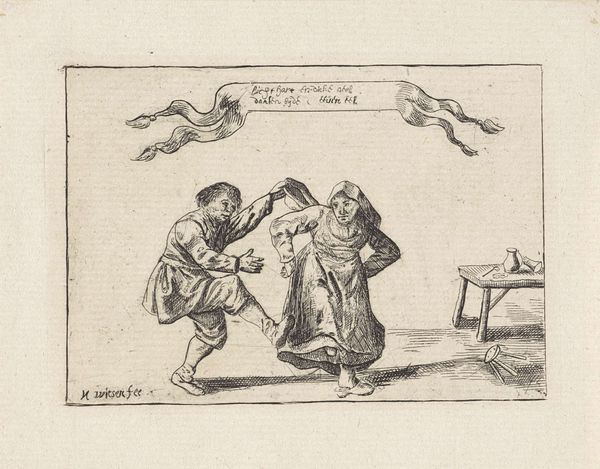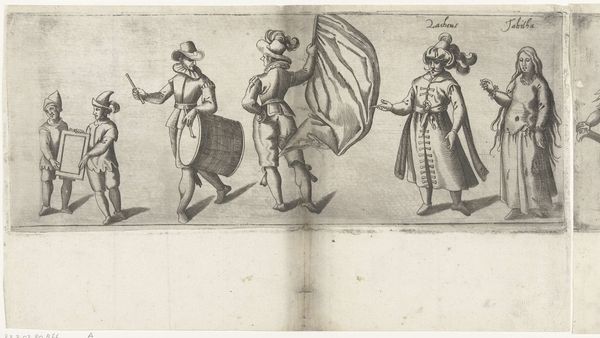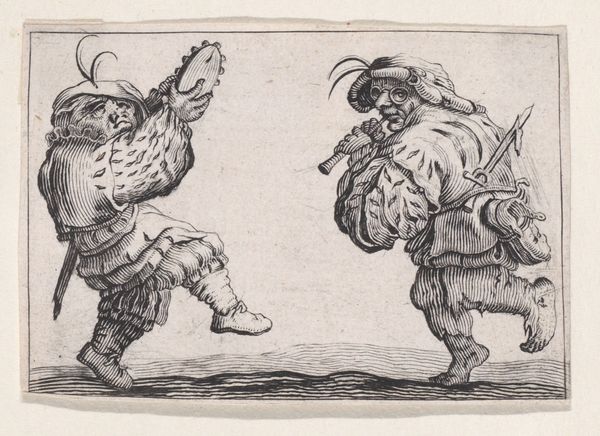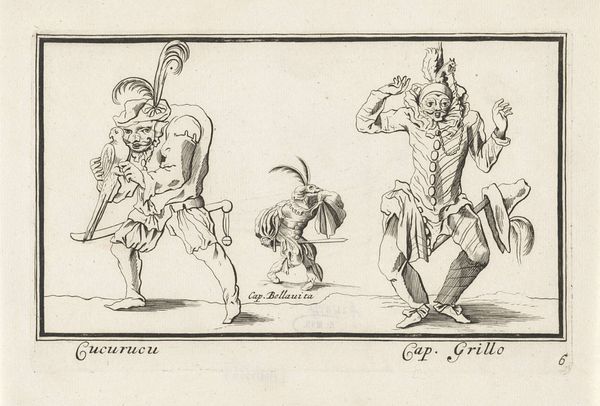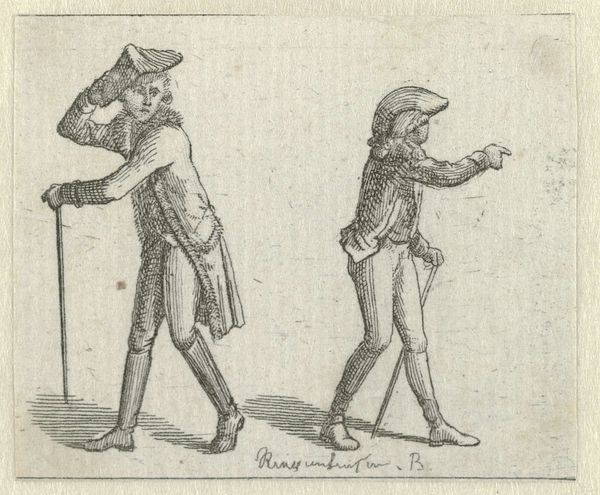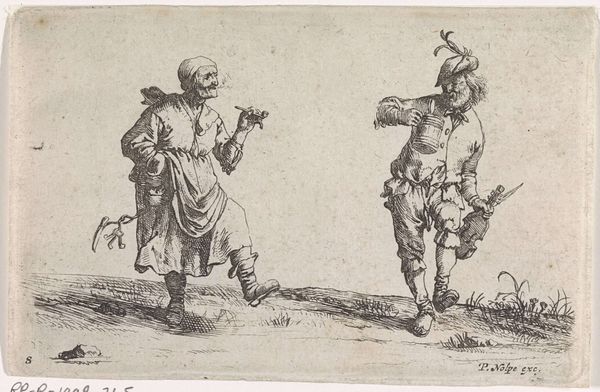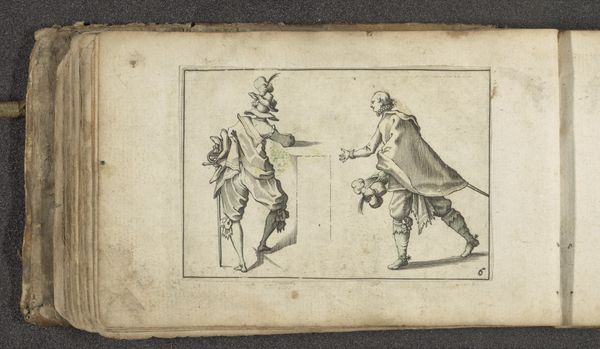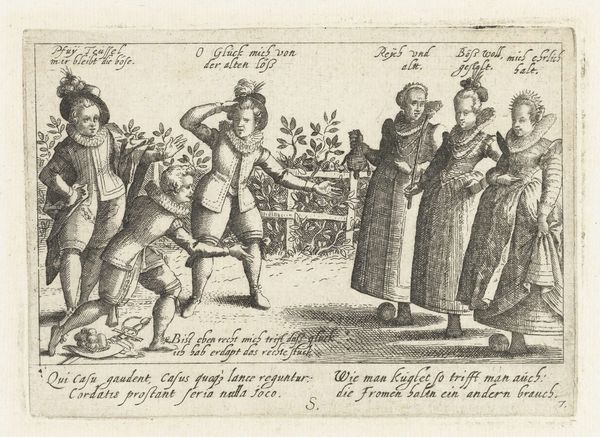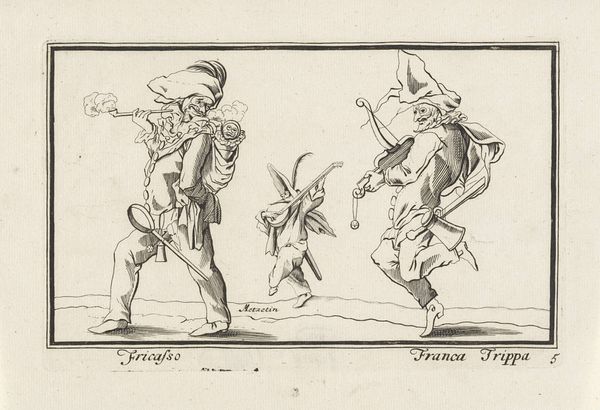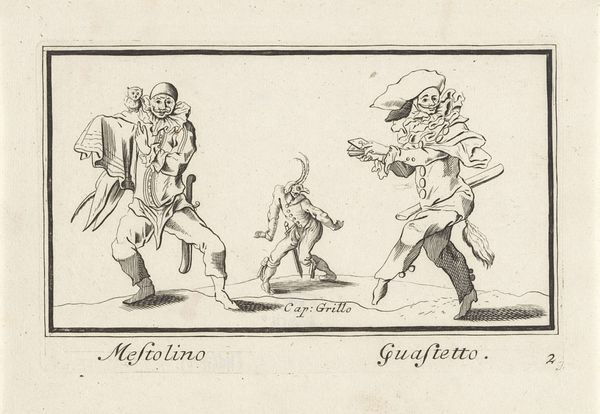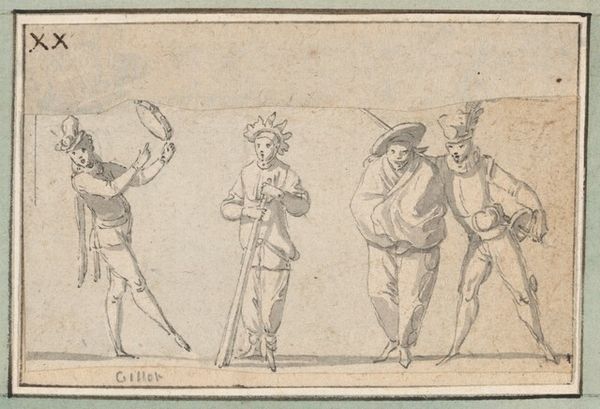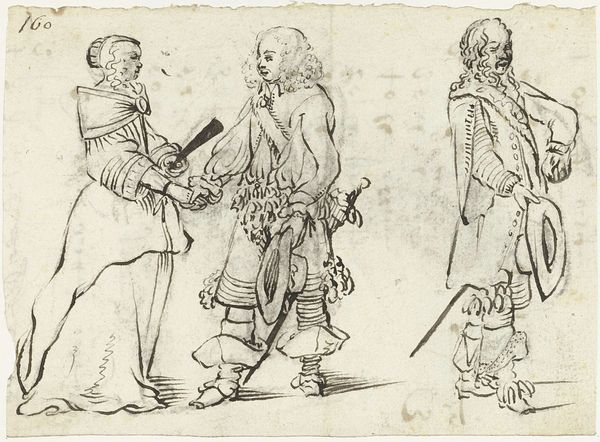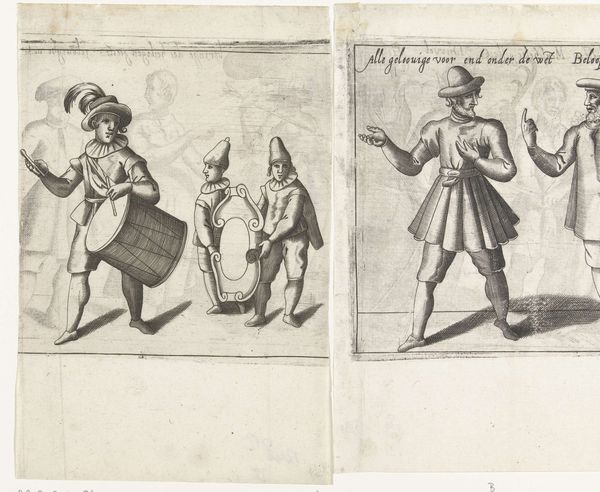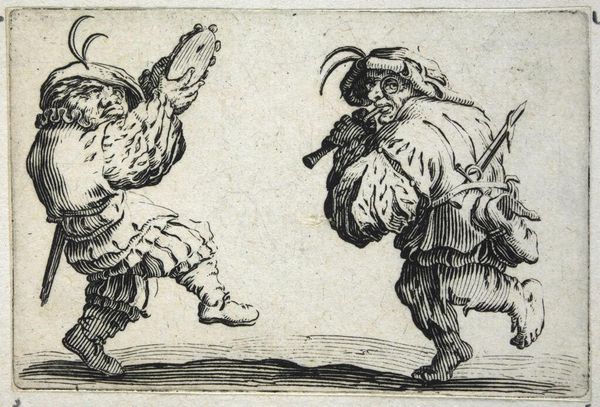
print, etching
#
baroque
# print
#
etching
#
caricature
#
figuration
#
history-painting
Dimensions: height 127 mm, width 179 mm
Copyright: Rijks Museum: Open Domain
Editor: Here we have Anthonie de Winter’s “Scaramouche, Cucurucu en Razullo,” made sometime between 1668 and 1707. It’s an etching, a print of three rather peculiar figures. They seem to be performing or posing, with a theatrical flair, and it's honestly quite bizarre! What do you see in this piece, beyond the initial strangeness? Curator: The 'strangeness', as you put it, is precisely where its power lies. These aren't just figures; they're embodiments of social commentary masked in caricature. Look at Scaramouche, clutching what appears to be a distressed cat. How might this image reflect the artist's, or perhaps the broader societal, attitude towards marginalized figures or even specific social groups of that time? Consider their exaggerated features and postures; these are not merely aesthetic choices. Editor: So, it's less about just funny characters, and more about who they represent? Curator: Exactly. Consider how commedia dell'arte, the performance tradition these characters spring from, was often used to critique power structures. Scaramouche, traditionally a boastful coward, here seems almost pitiable, holding a symbol of vulnerability. What statement might de Winter be making about masculinity or power through this depiction? And how might the other two figures, Cucurucu and Razullo, play into this narrative? Editor: I hadn’t considered the commedia dell'arte connection. I was focused on the almost cruel caricature, and it made me uncomfortable. Curator: And that discomfort is valid, and possibly intentional! Art doesn't always need to be comfortable; it should provoke critical engagement with the world around us and encourage conversations around things that we are uncomfortable with. What do you make of how these figures are positioned within the frame? Editor: I guess they are arranged so we almost feel we are watching a show. Curator: And who do you think that show is for? And what is it about? Editor: I'm starting to see this as less of a funny image and more of a complex commentary on power, vulnerability, and social roles during that period. It seems way more sophisticated now. Curator: Precisely! By examining the historical and social context, we can decode layers of meaning within seemingly simple caricatures. These prints offer invaluable insight into the complex intersection of art, identity, and politics during that time.
Comments
No comments
Be the first to comment and join the conversation on the ultimate creative platform.
